The Crossing the Equator Ceremony is a tradition among sailors that dates back a thousand of years
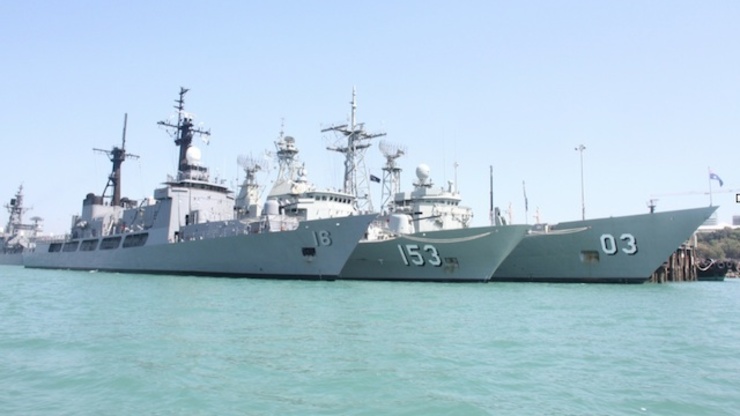
WAR GAMES: The
Philippine Navy's BRP Ramon Alcaraz arrives in Australia
The poor state of the Philippine Navy means many of the sailors remain a Pollywog, a term for those who have not crossed the imaginary line separating the northern and southern hemispheres. Those who have are called Shellback.
The
country's biggest ship, BRP Ramon Alcaraz, has arrived in Australia
A
photo from the Philippine Navy shows the 40-year-old
refurbished Hamilton-class cutter docked alongside Australian war
ships HMAS Stuart and HMAS Sydney at Fort
Hill Wharf ,
Darwin , Northern
Territory , Australia Philippines
Alcaraz's
voyage to Australia
It meant going
through the "exhausting" Crossing the Equator Ceremony, a fun
tradition among sailors that dates back thousands of years. When BRP Ramon
Alcaraz arrived in the country last year, a number of traditions including
a sail past were also
observed.
"The feeling
of fulfilment prevailed over exhaustion. We have just achieved what I consider
as an important milestone of being a navy. We are now certified
shellbacks," read the account of Ensign John Windy Abing.
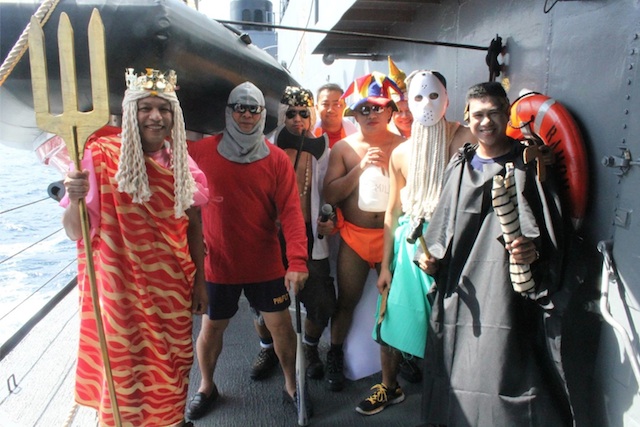
CROSSING THE EQUATOR CEREMONY: Captain Ernesto Baldovino (leftmost) playacts as King Neptune. PH Navy photo
The poor state of the Philippine Navy means many of the sailors remain a Pollywog, a term for those who have not crossed the imaginary line separating the northern and southern hemispheres. Those who have are called Shellback.
Out of the total 165 navy personnel onboard BRP Alcaraz, 105 were pollywogs.
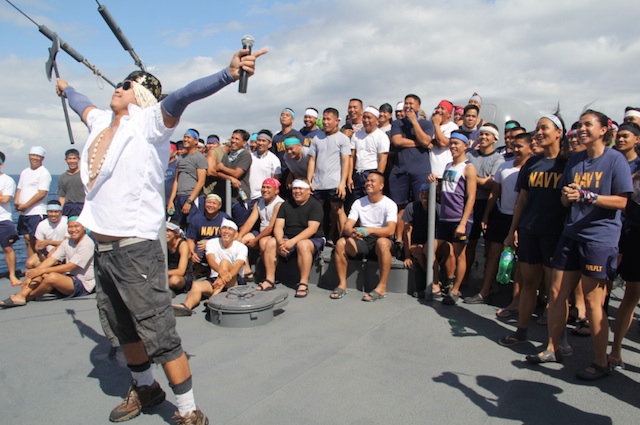
Lt Guillermo plays royal scribe Davy Jones
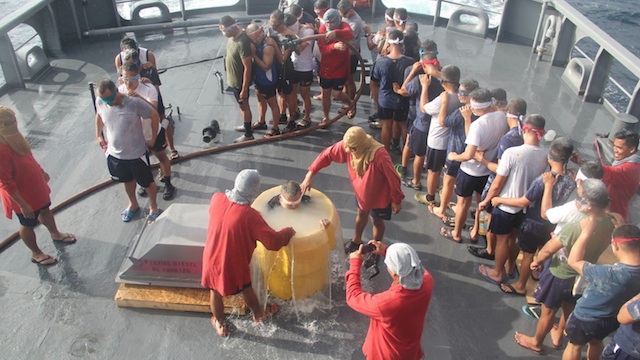
The pollywogs bathe in dirty water
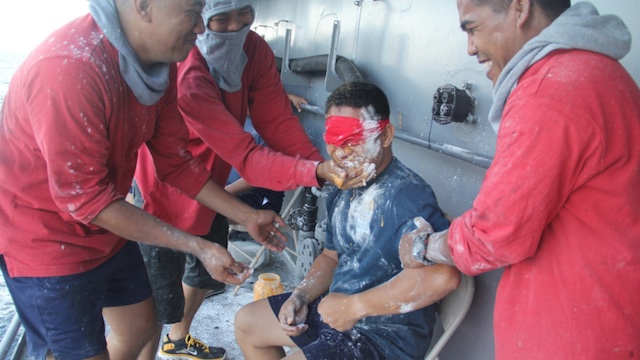
Flour make-up
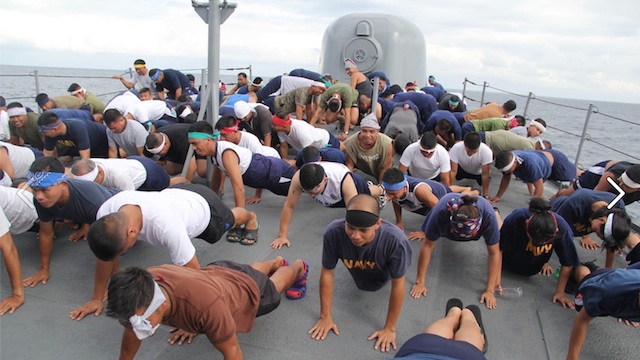
The punishment
Legend has it that King Neptune, the Roman sea god, boards ships that cross the equator to test the seaworthiness of the sailors. Pollywogs, therefore, should prepare to appear before King Neptune before they become true blue sailors.
Following tradition, the Pollywogs wore their uniforms inside out to differentiate them from the Shellbacks. They toured the engine room and the gun deck before the elaborate ceremony actually began, where King Neptune's royal scribe Davy Jones appeared before them to discuss "charges" brought against them by the Shellbacks.
King Neptune, played by the commanding officer of the ship Captain Ernesto Baldovino, ordered the shellbacks to punish the pollywogs. Blindfolded, they got a haircut, flour make-up, and mayonnaise shampoo. They crawled through the deck and bathed in dirty water.
Baldovino later declared everyone as shellbacks and they celebrated through a boodle fight.
The Philippines is one of 12 countries that will participate in the "Kakadu 2014," one of the largest international maritime exercise that happens every 2 years.
Also among the first activities of the Filipino sailors was a visit to Australian war ship HMAS Stuart, where they exchanged ball caps with their Australian counterparts.
One of the weakest in Asia, the Philippine Navy is upgrading capabilities and training of personnel to have a "minimum credible defense" posture in the wake of escalating tensions in the West Philippine Sea (South China Sea).Two new frigates, a third Hamilton-Class cutter, and two Strategic Sealift Vessels are among those in the pipeline. (READ: State of PH Navy modernization: 'Golden Days will return)
This is only the 2nd time that the Philippines is participating in the exercises. The Navy joined in 1999 and only sent personnel as observers in the following exercises.
The other countries that will send ships and aircraft this year are Japan, New Zealand, Pakistan and Australia. Seven others, including China, are sending personnel as observers.
Earlier in March, Alcaraz's twin ship BRP Gregorio Del Pilar also sailed to Indonesia to participate in the "Komodo" naval exercises that was participated in by 16 countries.
http://www.rappler.com/nation/67185-philippine-warship-crossing-equator
http://www.rappler.com/nation/67185-philippine-warship-crossing-equator

No comments:
Post a Comment
Note: Only a member of this blog may post a comment.